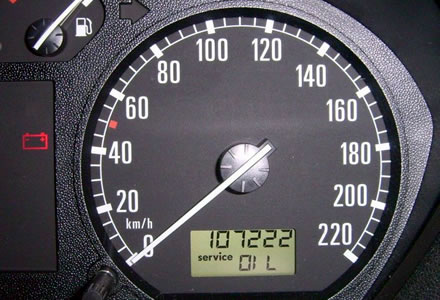
Lesson 7: Paint Lab (Science)

Teacher Lesson Plan
record the formula for their color creations so that other groups can replicate the color exactly. This lab has students create colors and designs. Students must precisely
45 minutes
Student expectations: Each group of 6 will determine a paint scheme for their car, mix the paint to match the template and then paint the car. The design should incorporate at least 4 sponsors. When you get the right mix paint your cars and record your formula or color recipe for another group to test. Explain any differences you found.
Hints for teachers: In order to make good use of class time, we suggest combining this with lesson 4 (design of a car) so that all members of the team are engaged. Ask questions of each team during the process as to how they determined their color selections and sponsors. What was most difficult about obtaining their selected colors? What role does the addition of black and white play in color? Where else is precision measurement important? How did they determine where colors would be located?
Student Worksheets
Name ______________________ Paint Scheme Lab
Name of group members:
Determine the colors (minimum of two) of your race car. It will be important to record the precise formula to create each color. Another group will use your formulas to re-create the exact colors.
Draw your car with the location of each color.
Materials List:
- Tongue depressors
- Paints: 3 primary colors, white, black
- Measuring spoons
- Paintbrushes
- Sandpaper
Using the following table, identify the precise amount of each paint used. Remember: another group will be using your formula to check to see if they can create the exact same color. Reminder you must create a minimum of 2 colors
|
Paints |
Color #1 |
Color #2 |
Color #3 |
Color #4 |
|
Blue |
||||
|
Red |
||||
|
Yellow |
||||
|
Black |
||||
|
White |
When you have completed your formulas and design, provide the formulas to another group for them to test.
- Was the other team able to produce each of your colors? Explain any differences.
- Were you able to produce each of the colors from another team? Explain any differences.
- Would you rather match a light or dark color? Why?
- How would you change your process of color selection next time?
- List items from your everyday life in which the exact color is a requirement?
Assessment
Name ____Teacher Key _____ Quiz Paint Scheme Lab
1) A team designs a paint color and give you the paint formula. Suppose that when you use the formula, the paint color doesn’t match the original. List three different possible errors that could have occurred.
(Possible answers:)
- The first team didn’t accurately measure and document the colors used to create the paint.
- The first team didn’t copy the formula down correctly.
- The second team didn’t measure out the ingredients correctly
- The second team didn’t use the right colors in their mixture
- The teams painted different surfaces – such as one team painting the color on
wood the other on paper or plastic. Colors can appear different when painted on different surfaces. Or if one painted on a light surface and the other painted on a dark surface.)
2) If you were going to try to create a paint that was very difficult to copy, how would you do that?
(Possible answers: includes a large number of different colors in your formula; don’t use the same quantity of each of the different colors – vary the quantity of each color; paint the background a light or dark color and then apply your designed color.)
Name ______________________________ Quiz Paint Scheme Lab
- A team designs a paint color and gives you the paint formula. Suppose that when you use the formula, the paint color doesn’t match the original. List three different possible errors that could have occurred.
- If you were going to try to create a paint that was very difficult to copy, how would you do that?
National Science Standards
- All students should develop abilities necessary to do scientific inquiry and understandings about scientific inquiry.
- All students should develop abilities of technological design and understandings about science and technology.
- All students should develop understanding of science and technology in society.
Science Background information
Expert information in this section has been provided by:
Rolin E. Barrett, Jr., Ph.D., P.E.
Consulting Engineer and Accident Reconstruction Specialist
Barrett Engineering
Eric Klang, Ph.D.
Director, Undergraduate Program
Mechanical & Aerospace Engineering
Faculty Advisory, Wolfpack Motorsports
Interviewer: What are the properties of paint ?
Expert: Look at it from the perspective of the – of who is analyzing the property of the paint. If it’s the consumer, if it’s the person who is buying a car they want that car to look nice. They want that car to hold up well over a period of time. And be a source of pride and enjoyment as well as something they just drive every day to get them around. To the designer, to the engineer you’re thinking more in terms of protecting the materials of the car. You’re thinking about the properties of the car such as making it more visible to prevent an accident and increasing the car’s ability to resist weathering or salt on the roads that’s placed during winter. As well as the ability of the paint to resist damage such as would come from rocks and debris on the roadway that you might normally encounter. But the paint has to be pretty tough. It has to be able to expand with temperature changes. And it has to be resistant to the environment.
Expert: You want paint to resist dings - those annoying little dents and damage that you get from cars parked nearby and people carelessly opening doors. You want them to resist shopping carts. You want them to resist children’s toys such as a basketball, a little gird on it bouncing off the side. Magic markers. All of those things that can happen.
Expert: So paint has to put up with a lot during the life of the vehicle. But these are things that are important and people who design paints use their knowledge and their skills to help make the paint better.
Interviewer: Describe the differences between a house paint and one that would be suitable for cars?
Expert: Specialty cars use paints that require a great deal of labor to apply them. But for most passenger vehicles, the paints have to be suitable for mass production. The paints also have to be chosen to adhere to the surface of the primer which is first applied to the metal. So the paint that you use for a car is going to have a slightly different composition than the paint you’re going to use in a house.
Interviewer: A monkey story. Paint sticks to something. But the how the paint sticks can be different. A mechanical bond builds on some sort of interface. If you have a porous surface you can let the paint actually soak into that surface and form kind of a mechanical bond. In Africa you can catch monkeys by placing a banana in a box with a single hole. The monkey will grab that banana forming a kind of a mechanical joint there. The monkey will not let go of the banana in the same way the paint will not let go of the surface.
This would be more an example of how you would paint wood for example. Because wood’s very porous. Vinyl siding has pigment mixed in with the vinyl. If you cut a cross section you’ll see the same color throughout. Usually with metal you need to anodize the paint so that it will hold the paint. But you can paint aluminum. And you can paint vinyl. But in all those cases you have to be really careful that as you paint these things the paint that you select will adhere to what you’re trying to get it to stick to.
Expert: One thing that car paints have to undergo that house paints do not is that there maybe a strong change in shape of the part. For example while the car paint may be able to stick to body parts and relative non changing sections. If it’s on the plastic bumper cover for example it may have to be able to withstand large deformations and still spring back and not loose its paint.
- Tongue depressors
- Paints: 3 primary colors, white, black
- Measuring spoons
- Paint brushes
- Sandpaper

